Making 'Hellhole' with Kodak 35mm & 65mm film delivers a result where art-meets-narrative
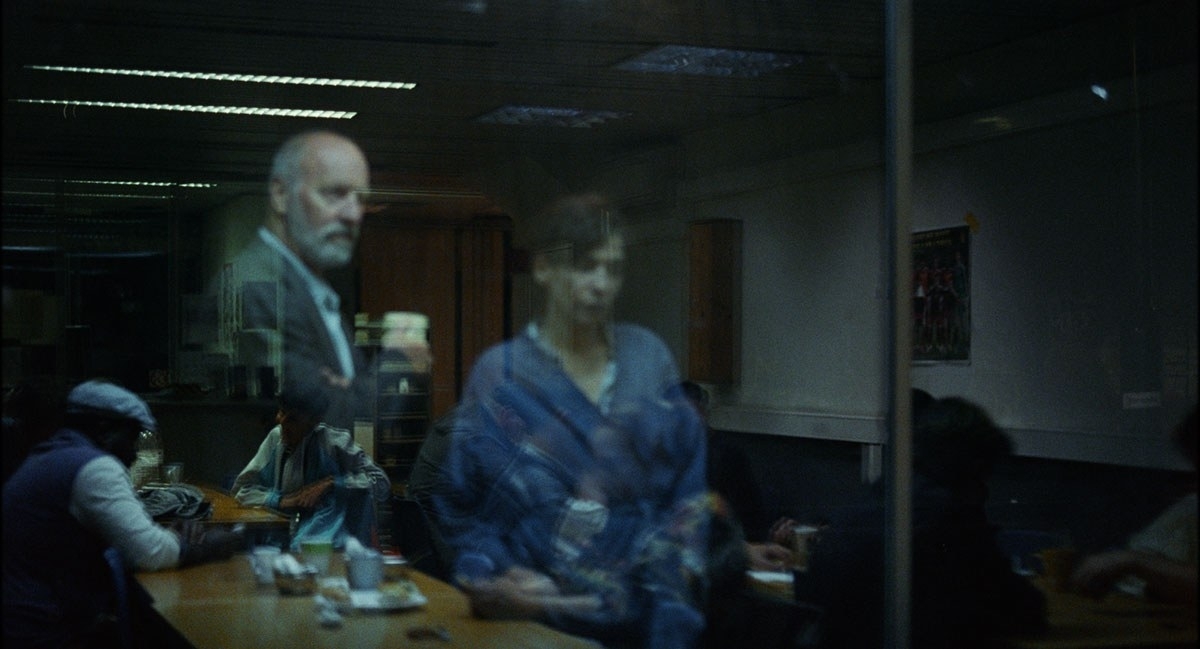
A scene from Bas Devos’ production of "Hellhole." Copyright Minds Meet.
Created on Kodak 65mm and 35mm film, and described by one reviewer “as much an art installation as a narrative feature,” director Bas Devos’s Hellhole delivers an emotional, spatial and temporal study of lost souls in the wake of the devastating terror attacks in Brussels on March 22, 2016 when 32 civilians plus three perpetrators were killed and hundreds of other people were injured.
Although the attacks themselves are barely mentioned in the movie, the voyeuristic camera and lighting work by Belgian cinematographer Nicolas Karakatsanis conveys the pervasive trauma of the shell-shocked citizens subsequent to that fateful day.
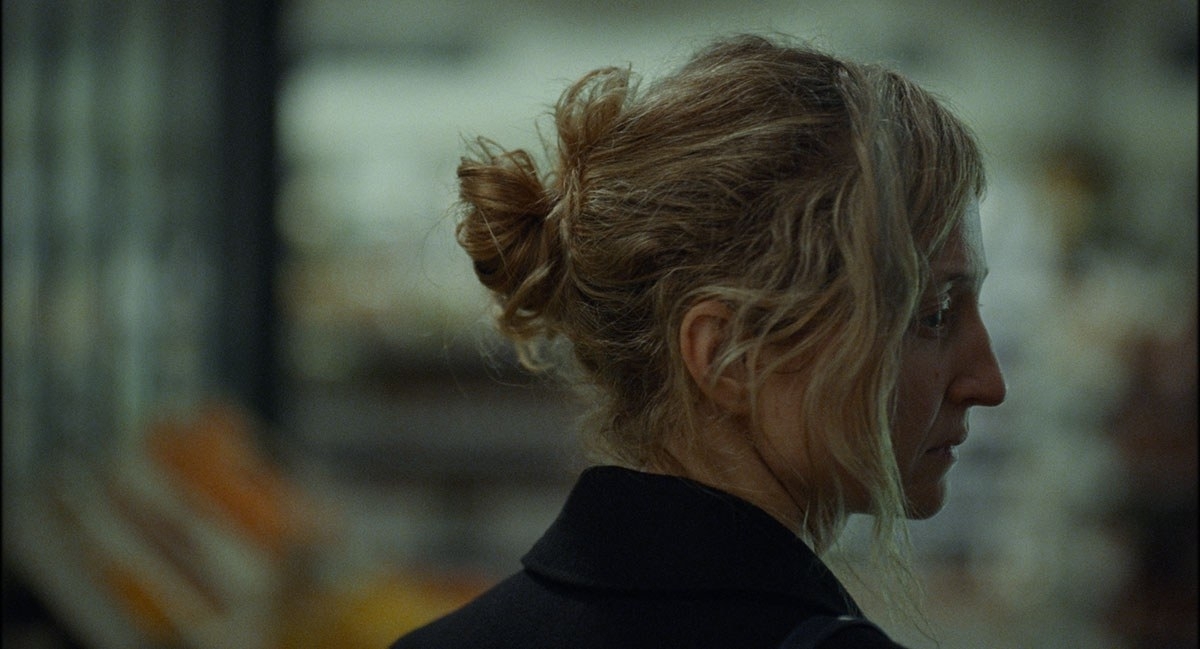
Alba Rohrwacher stars as Alba in Bas Devos’ production of "Hellhole." Copyright Minds Meet.
The intersecting visual narrative of the €1.2M Euro production follows a trio of socially-diverse but emotionally connected characters as they go about their dislocated daily lives in Brussels. Mehdi (Hamza Belarbi) is a youth of Algerian extraction suffering from ADHD and chronic migraines, who faces a moral dilemma when his forceful older brother asks him to steal from his employer. There’s Alba (Alba Rohrwacher), a permanently-fatigued translator working in the European Parliament. Wannes (Willy Thomas) is a doctor who keeps vigil along with his sister over her dying husband, and whose son is a military fighter pilot on active duty in the Middle East.
Equally important as the people in the movie are the urban spaces in which they are pictured. Karakatsanis' camera, both probing and meditative, continually creeps alongside walls and around corners, absorbing different architectural facades of the city, with the people themselves frequently being observed from outside different buildings.
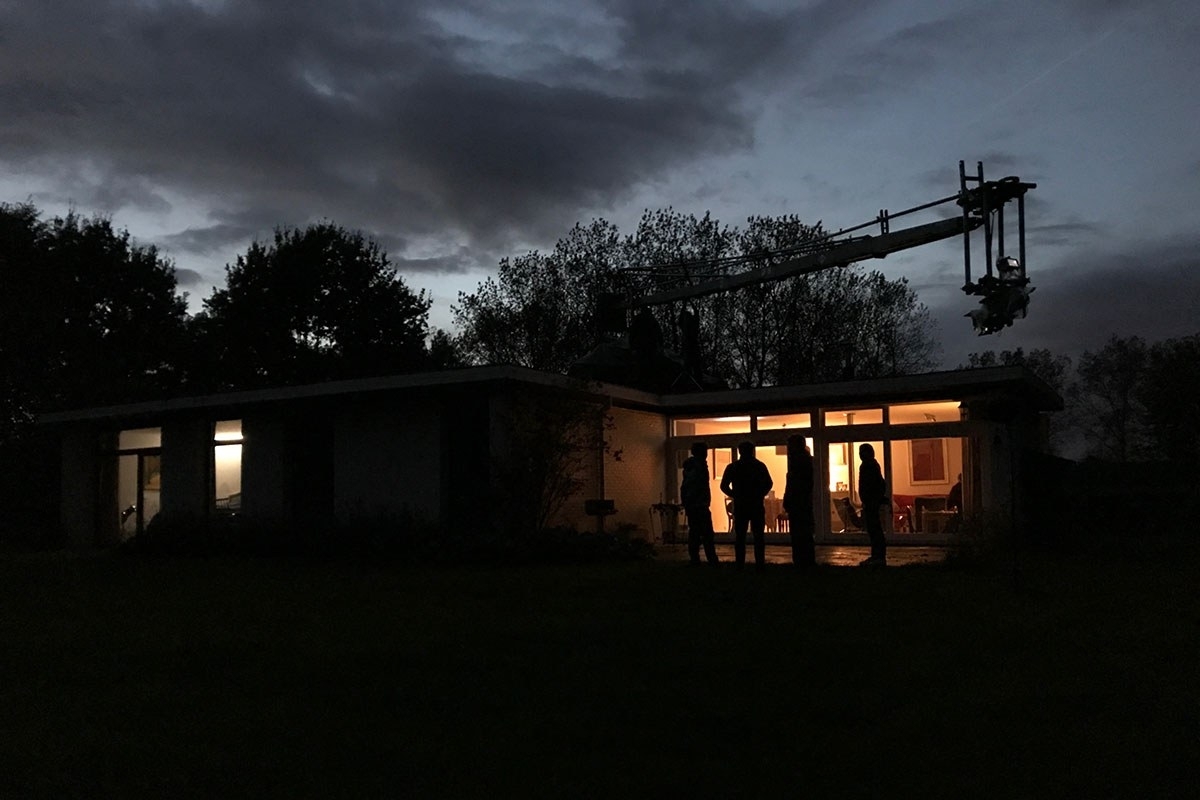
Setting up the 35mm camera and 360-degree crane move around the house in Bas Devos’ "Hellhole." Photo courtesy of Nicolas Karakatsanis.
In one spellbinding scene, which compresses time from dusk to dawn, the camera performs a 360-degree orbit around the house in which Wannes and his sister await the death of his brother-in-law. Another threatening circular shot wheels the audience around a stationary F16 fighter inside a darkened aircraft hangar.
Karakatsanis is no stranger when it comes to storytelling using celluloid film. He previously shot Devos’s multi-award-winning feature Violet, incorporating 65mm film, which was noted for its exquisite sculptural of cinematography at the 2014 Berlin Film Festival. Additionally, the production of Hellhole fell between two other celluloid-originated features which Karakatsanis shot in 2017, all visually distinctive from one another, namely the acclaimed figure-skating drama I,Tonya (2018, dir. Craig Gillespie, shot on Kodak 35mm) and Un Ange (Angel) (2018, dir. Koen Mortier, shot on Kodak 35mm), which relates the final 24 hours of a world-renowned, but discredited sportsman, set in Senegal.
“I don’t specifically have a favorite genre when it comes to shooting features. Rather, I try to work on scripts that have an original view on a specific story to which I can bring interesting cinematographic values,” says Karakatsanis “I am a guy who likes color, texture and patina – all of which you get naturally from film, as opposed to digital images which can look flat, like wallpaper. Film gives your production a distinctive soul.”
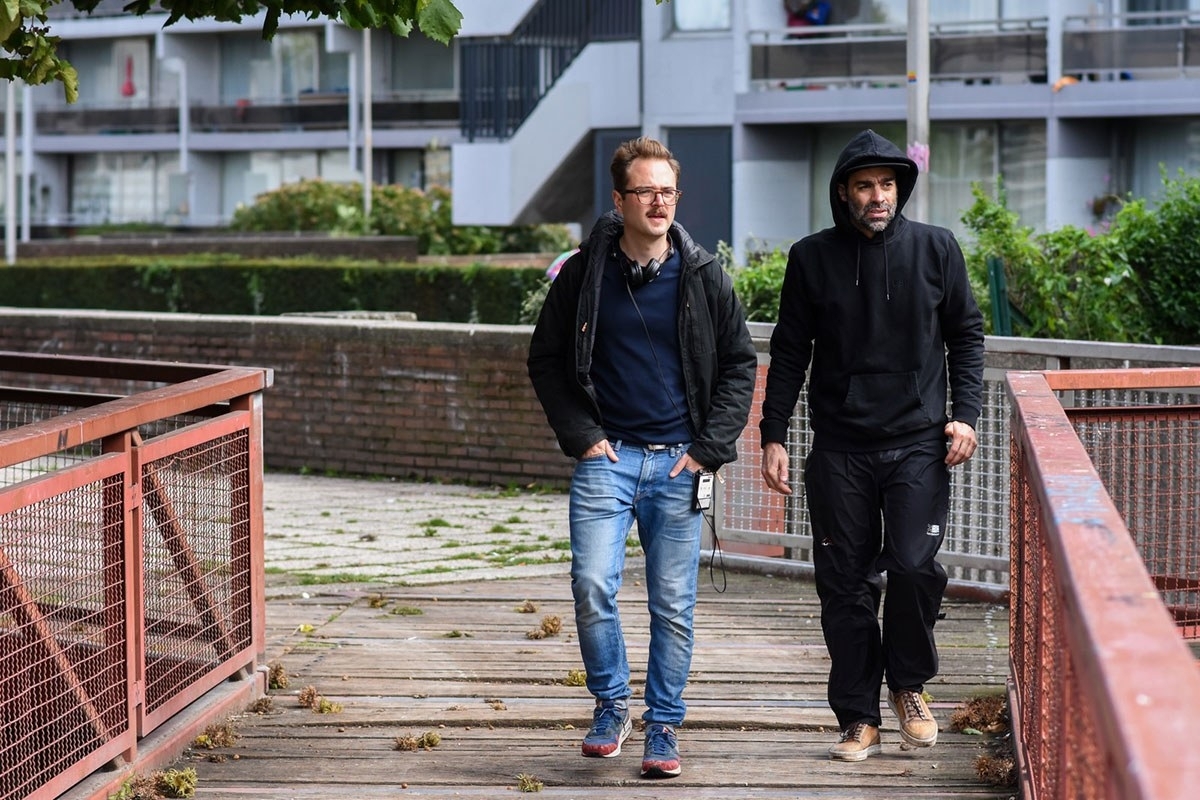
Director Bas Devos (l) with cinematographer Nicolas Karakatsanis during production on "Hellhole." Photo copyright Erik De Cnodder.
It is with this spirit that he and Devos set about filming Hellhole.
“Bas and I have known each other since attending the LUCA School of Arts in Brussels and are very good friends. When he writes the script, he already has a clear vision of the images in his mind and is very specific about how he wants to shoot,” Karakatsanis explains. “This means my input is more on the technical side of the cinematography and how to achieve his ideas. We don’t talk about coverage and blocking but more about the minimum number of shots. If he can do a scene in one take, he really likes that. And he likes a very slow tempo that feels emotional. So the cinematography on Hellhole was always going to be kept very simple but also very stylized. And it was a sine qua non that Hellhole was always going to be shot on film.”
Production on Hellhole took place over 35 shooting days, during the summer of 2017, at locations around Brussels where both Devos and Karakatsanis live.
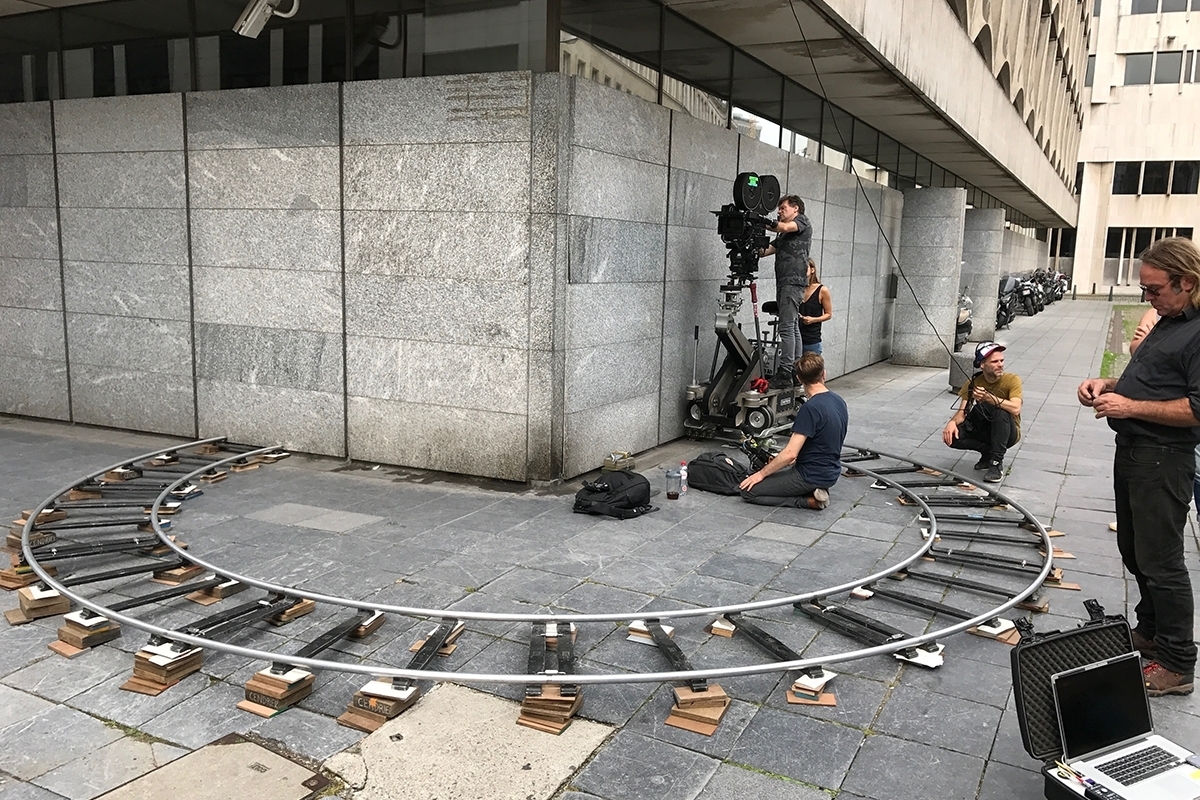
The 65mm film camera on a circular track during production on Bas Devos’ "Hellhole." Photo courtesy of Nicolas Karakatsanis.
“A key theme was to have the camera moving in observational arcs – many with nodal moves of 180, 270 and 360-degrees – around the corners of city blocks, buildings and houses, all designed to deliver a very different visual experience of city life. Simple, but weird and abstract,” he says. “The selection of lenses and 35mm/65mm film formats were really important in this respect.”
Karakatsanis chose to frame Hellhole in 1.85:1 aspect ratio, using his own set of Leitz Summilux-C spherical lenses for use on an Aaton XTR 35mm camera 3-perf. “I am very much in love with the look of the Leitz lenses, especially combined with celluloid. They’re more pure and natural than other lenses, not overly analytical, but humane and transparent. Also, as they don’t present any rectilinear issues on architectural features that you might get with other glass, they don't get in the way of your storytelling.”
As for the 65mm sections on the film, Karakatsanis deployed his own re-engineered 8-perf 65mm non-sound-sync Mitchell Todd-AO camera, together with his own private collection of Mamiya medium format lenses. This allowed him to bring shallow depth-of-field and a more graphical look to the images, cropped to 1.85:1 in the camera.
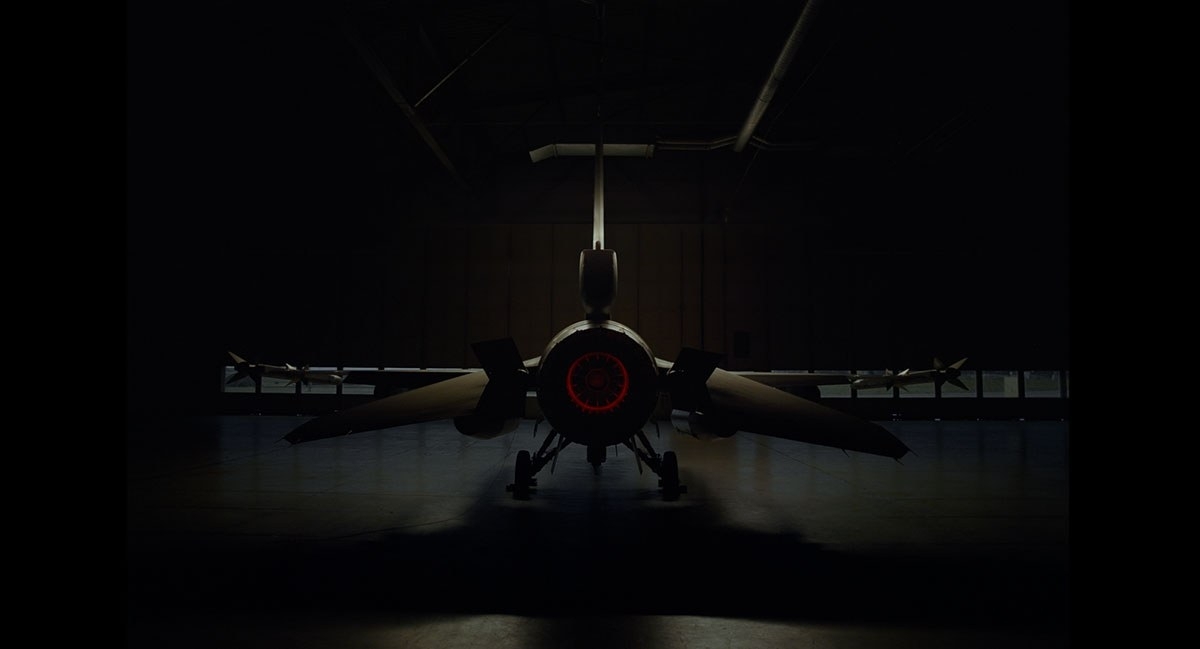
The F16 fighter as pictured in Bas Devos’ production of "Hellhole." Copyright Minds Meet.
He estimates 65mm was used for 40% of the production, “either for a mood piece where we wanted heightened reality and did not need sound – such as the F16 fighter shot, or when we knew we would redo the sound later – such as various street corners and some interiors. The rest we shot on 35mm in 3-perf on the Aaton XTR.”
As for the filmstocks, Karakatsanis shot the 35mm sequences using KODAK VISION3 250D Color Negative Film and KODAK VISION3 500T Color Negative Film, using just 500T for the 65mm.
“The 500T is an incredibly versatile stock that you can use to shoot the wide range of day/night, interior/exterior scenes,” he says. “The 65mm version of the 500T is pretty much grain free and delivers an amazing immersive experience. I went with the 250D as knew it would provide an interesting transition in terms of grain and texture, whilst still retaining the coherence of colour rendition and saturation with the 500T.
35mm rushes were developed at Studio L’Equipe in Brussels, with the 65mm footage processed at Cinelab in London. “I’m not a guy who likes to fiddle with push and pull processing in general. I prefer to leave things how they are from the moment of the shoot,” he adds.
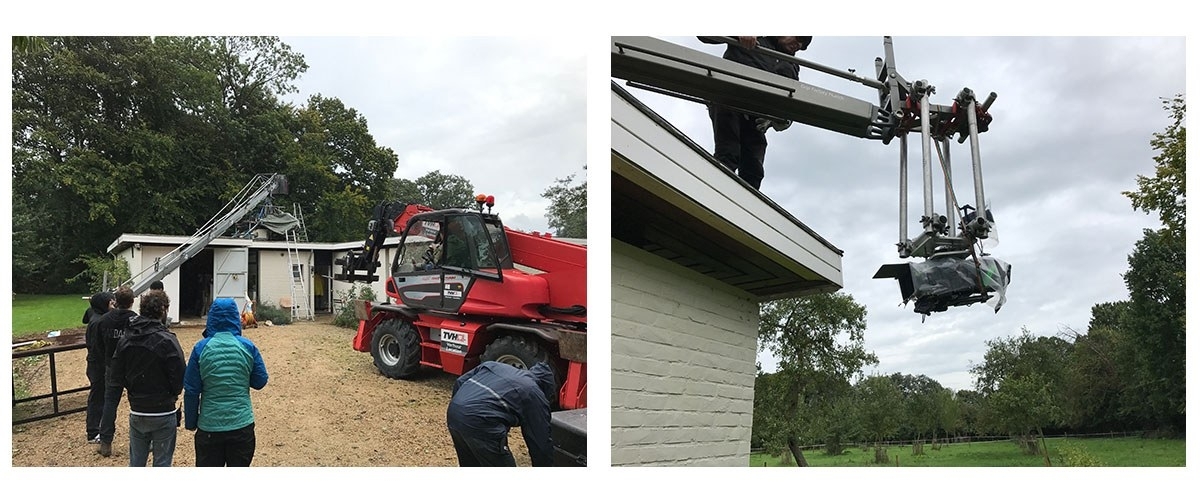
Setting up the 35mm camera and 360-degree crane move around the house in Bas Devos’ "Hellhole." Photos courtesy of Nicolas Karakatsanis.
So how did Karakatsanis go about shooting the hallmark camera moves for the production? For the doctor’s vigil scene, Devos and Karakatsanis found a standalone property with plenty of windows and a flat roof, upon which a crane could be mounted and perform a perfect circular motion, under the control of the grip team, with the 35mm film camera looking down from roof height.
“The idea behind the shot is that the doctor recalls his memories of the house since childhood, whilst his brother-in-law’s life ebbs away, and to compress time in one shot,” says Karakatsanis. “Our original plan was to do separate passes at different times of day – morning, evening and night – with artificial lighting doing all sorts weird and wonderful things. But, when it came to it, we went for the much more simple approach of shooting two separate takes – one at night and one at sunrise – that could be mixed together later in the edit. The funny thing was that the grip team performed those same moves with huge precision, almost frame accurate, which meant the temporal transition in the final result looked very smooth and was highly effective.”
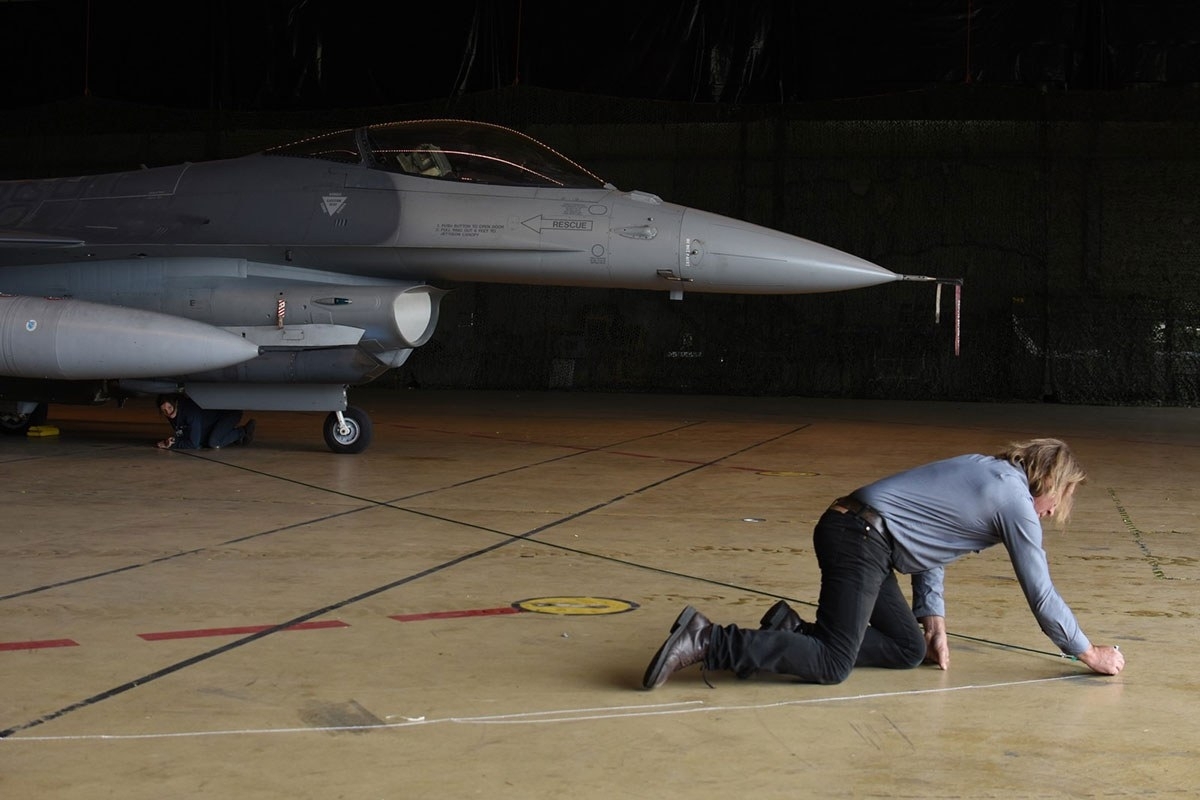
Marking out the circular path of the 65mm camera move around the F16 fighter jet in Bas Devos’ "Hellhole." Photo copyright Erik De Cnodder.
As for the 360-degree shot around the F16 fighter, Karakatsanis decided to film the scene on 65mm for striking visual effect. The camera dolly path was demarcated using ropes and chalk to mark the hangar floor, and a large square lighting truss was custom-built directly above the spot where the F16 would be sited.
“We wanted to shoot the idea of a fighter plane, rather than the fighter itself,” he says. “So I always had the plane backlit and in silhouette, and had the lights chase precisely in time with the very slow camera move. The great thing was the first take was perfect, and we didn’t need a second.”
Karakatsanis concludes: “I have said this before, but there is no doubt in my mind that, for features which might be shown in decades to come, film should be your standard. It has a classic, timeless look with real soul. As such, it was the ideal canvas for Bas to depict the epic and emotional story that is Hellhole.”